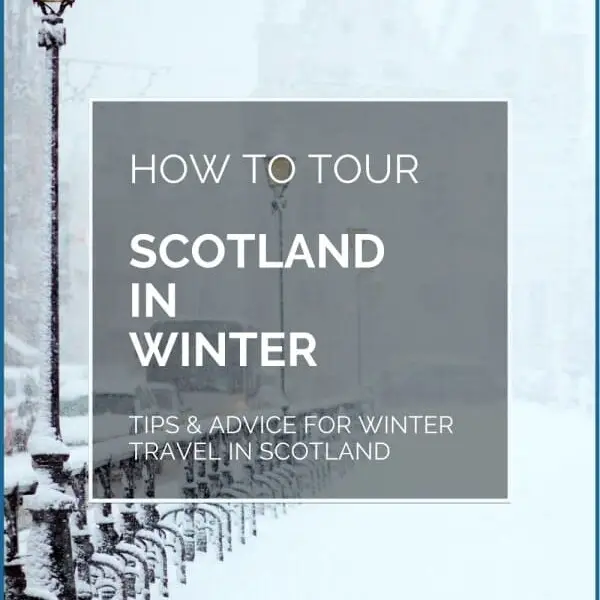Winter is one of the best times to visit Scotland, thanks to flights and hotels that are much cheaper than they are in the summer months and roads that are blissfully quiet compared to the busy tourist season. However, there are a few negatives that could disrupt your winter touring plans, with sub-zero temperatures, short daylight hours, and icy roads causing mayhem for the unwary traveller.
In this article, you’ll discover essential winter in Scotland travel advice that will help you explore the country safely, whether you’re planning an exciting road trip through the Highlands or a cosy weekend break in a city.
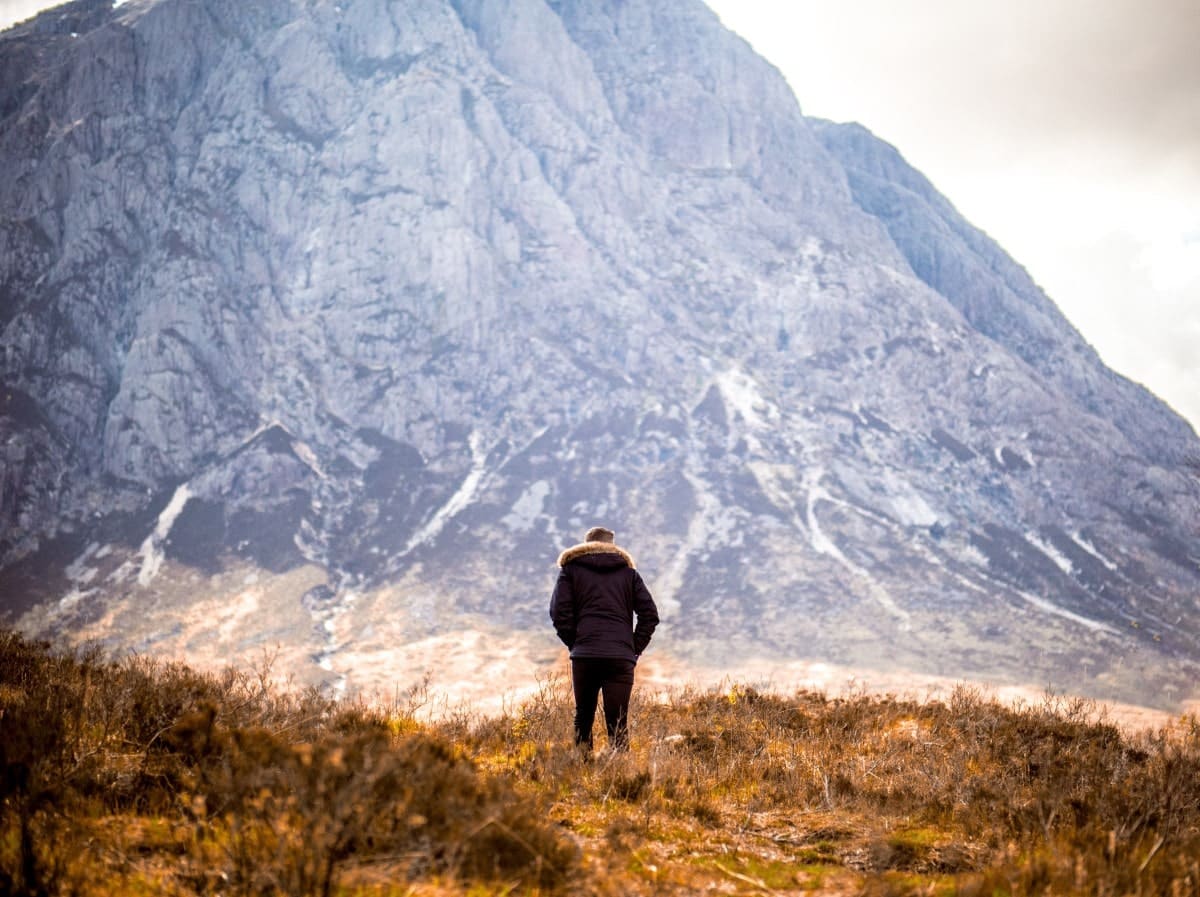
Touring Scotland’s Cities in Winter
If you intend to visit Scotland to appreciate its culture and history, then I suggest you stick to Edinburgh and Glasgow for the duration of your winter stay. Both cities have great transport links, and as they’re within an hour of each other by train or car, you can easily fit a visit to both into one holiday.
The biggest bonus of taking a winter city break is that the weather doesn’t need to be a consideration as everything will be on your doorstep.
Want world-class restaurants? Try Bilson Eleven in Glasgow or The Kitchin in Edinburgh. Passionate about history? How about Glasgow Cathedral or Edinburgh Castle? Or maybe you have an energetic family, in which case take them to attractions like Edinburgh Zoo or Glasgow’s Kelvingrove Museum.
All these attractions are within easy access of the city centres and if the weather closes in there are always public transport services to take you somewhere else. Edinburgh has the excellent Lothian Buses which operate throughout the city and into the surrounding countryside from West to East Lothian.
There’s also a new tram system that offers fast travel across 10 miles from Edinburgh airport to the city centre and Leith. You’ll find updated timetables for trams and buses at the Transport For Edinburgh website, or you can download the Lothian Buses app on your phone.
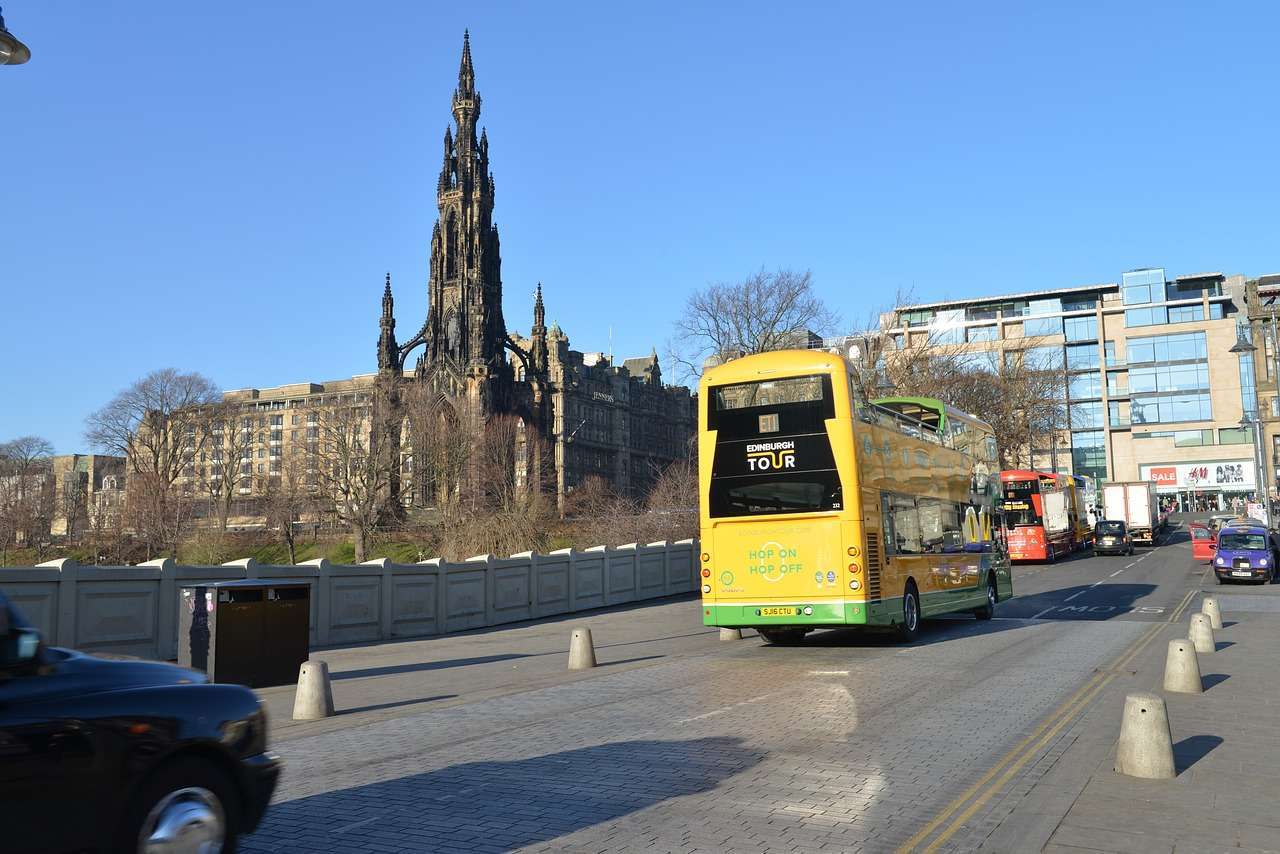
Payment for either service is via pre-paid books of tickets from Lothian Bus shops (there’s one on Edinburgh’s Waverley Bridge) or on buses or trams using a contactless card or cash. Expect to pay around £5 for an all-day ticket which allows unlimited travel throughout the city.
Glasgow benefits from the ultra-efficient SPT subway system, which has trains that run every 5 minutes at peak times between an oval of 15 stations in all of the city’s main districts. You can either buy a single ticket or a Subway Smartcard which allows you to top up as you go.
First Bus also runs a sizable bus network in Glasgow, but in my opinion, they are not nearly as nice as Edinburgh’s Lothian Buses. With that in mind, you might like to board a hop-on, hop-off bus instead, which will take you to all the major attractions on a circular tour that runs throughout the day.
If you want to explore both cities on a winter tour, you can either drive between them, take a bus, or use the train. Personally, I suggest using the train, as it’s the fastest and easiest option, with half-hourly trains between Edinburgh Waverley station and Glasgow Central station that take around 90 minutes.
You could also drive, which takes around an hour via the M8 (depending on traffic), but be aware that parking charges in both cities are expensive, especially in the inner-city NCP car parks. As an example, the NCP Castle Hill car park near Edinburgh Castle charges £25 to leave your car for just six hours.
Another good option for touring between Scotland’s main cities is to take a bus using Megabus (my personal preference) or Citylink.
Pre-book Glasgow to Edinburgh bus tickets with Megabus
There are up to 72 daily services between Glasgow and Edinburgh with Megabus, and the journey takes just over an hour with stations in both city centres. Fares are usually around £5, but the price can double if you buy a ticket at the last minute.
Touring Scotland’s Countryside in Winter

One of the highlights of visiting Scotland in winter is carving up a mountain on a snowboard or pair of skis, and there are so many slopes in the Highlands you’ll be able to have a great time whether you’re a beginner or a seasoned expert.
If you fancy a challenge, why not head to Glencoe Mountain for the hair-raising Flypaper, which is officially Scotland’s steepest ski slope? On the other hand, if you’re a novice, you can learn the basics at the Glencoe Snow sports School before hitting the white stuff for real.
Either way, the experience will stay in your memory for a lifetime, and it’s often the deciding factor for choosing the countryside over the city in winter, but what else is there to tempt you away from Scotland’s urban areas?
After snow sports, the most popular winter outdoor activity in Scotland is hiking, and there are so many trails to choose from that that you might feel a little overwhelmed, but an OS Map will put you on the right path (no pun intended).
One of the nicest walks in the Scottish Highlands is the Loch Morlich circuit, which loops around one of the most picturesque lochs in the country, framed by the stunning Cairngorm mountain range and Glenmore Forest. A winter walk there is the perfect way to relax after an exhausting run on the slopes, and the loch’s golden sand beach makes a nice change from mile after mile of snow.
You could also follow the John Muir Way which is a 134-mile adventure across the lower-middle region of Scotland from Helensburgh on the west coast to Dunbar on the east, or The West Highland Way which stretches 96 miles from Milngavie north of Glasgow to Fort William near Ben Nevis.
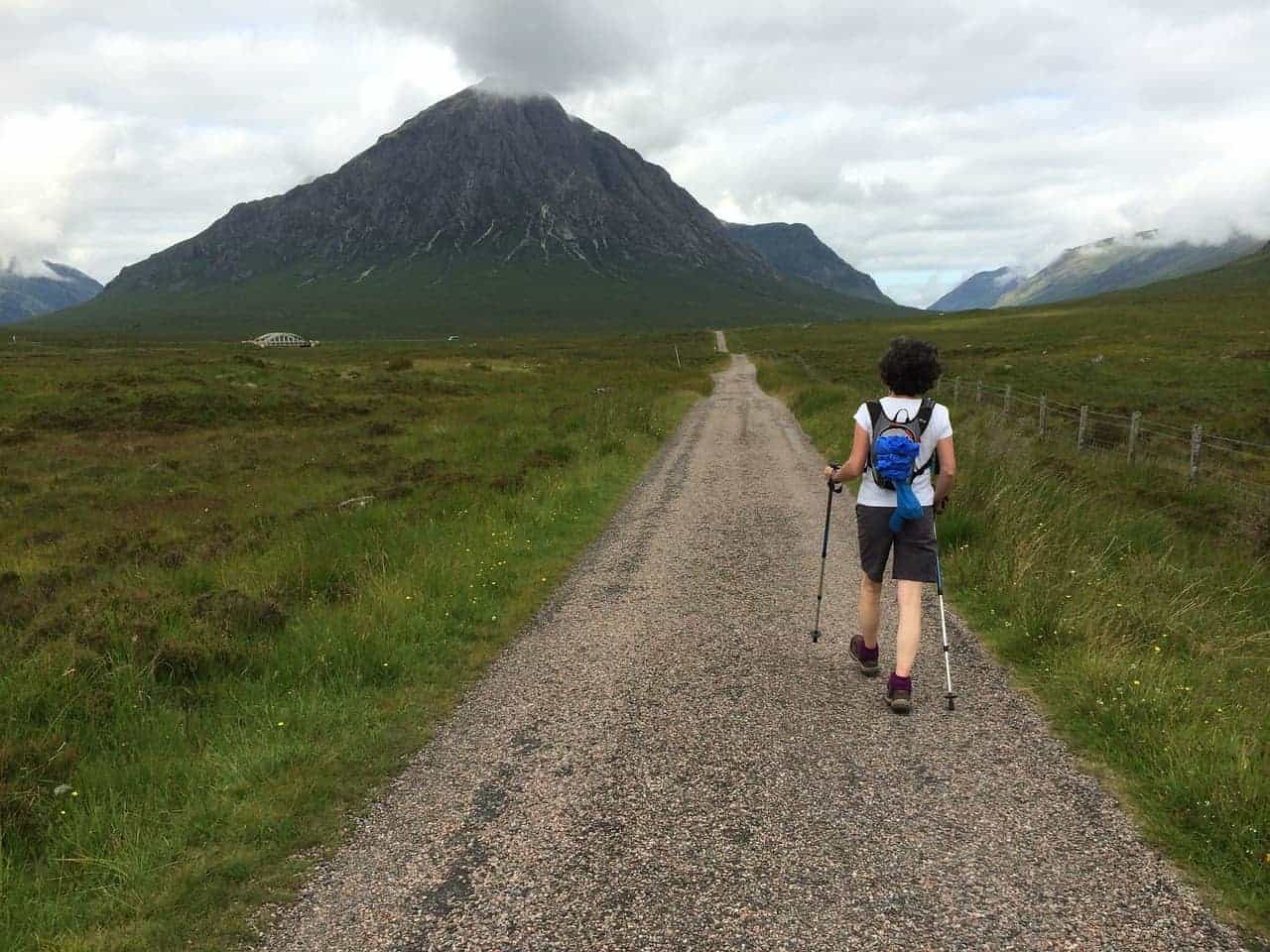
One option for a winter hike that’s a little bit different from any other in Scotland is The Arran Coastal Way which runs in an oval around the coastline of the Isle of Arran. I’m mentioning it because, unlike most of Scotland’s walking trails, the majority of the Arran Coastal Way is on tarmacked roads, so it’s pretty much impervious to the weather, plus the island is spectacularly pretty.
If you’re visiting the Hebrides and would like to see what many people regard as the most beautiful landscape on earth, I recommend you take a trip to The Quiraing on the Isle of Skye. This stunning landscape was formed by a series of ancient landslides thousands of years ago, and it offers views that are nothing short of breathtaking. I go into much more detail in my Guide to The Quiraing.
Other western islands that might be worth visiting on a winter tour of Scotland are Mull and Islay, each of which offers a different experience.
Mull is almost as attractive as Skye but has far fewer tourists, and there are superb walks to enjoy in winter, depending on the weather. If the conditions are clear, I thoroughly recommend a walk up Ben More Mountain, but if not, you’ll find Mull’s single-track roads offer a nice alternative around much of the coastline and through the centre of the island.
Islay is one of the most picturesque islands on the west coast, and while it’s best known for its whisky there are also lots of walks to be had, with The Oa and Loch Gruinart being two highlights along with the coastal road that follows the shore of Loch Indaal.
When Is Winter in Scotland?

Winter in Scotland officially lasts from December 21st to March 20th, although the ‘off-season’ encompasses October to April. I’m making this point because if you intend to visit Scotland outside of the peak season to save money, you might consider the end of autumn and the start of spring instead of the depths of winter, as the weather will be a few degrees warmer and the daylight hours will be an hour or more longer.
Aside from the weather, the one thing that defines winter in Scotland is the short days, and depending on where you travel you could find yourself in darkness for up to 17 hours.
The number of daylight hours varies between the far north and the southern borders and you will find there’s at least an hour’s difference between the two regions, which is something to think about if you want to go sightseeing or set out on an epic hike.
Below is a table of the sunrise and sunset times for Orkney in the far north and the Borders in the far south so you’ll have an idea of what to expect in winter.
Daylight Hours in Scotland in Winter
| Location (15th of the month) | Sunrise | Sunset | Daylight hours |
|---|---|---|---|
| Scottish Borders October | 07:42 | 18:10 | 10:28 |
| Scottish Borders December | 08:33 | 15:39 | 7:05 |
| Scottish Borders February | 07:35 | 17:16 | 9:40 |
| Orkney October | 07:49 | 18:04 | 10:15 |
| Orkney December | 08:59 | 15:14 | 6:14 |
| Orkney February | 07:46 | 17:06 | 9:19 |
Winter Weather in Scotland

We love jabbering on about the weather here in Scotland, and truth be told, it’s a bit of a national obsession. I think that’s down to the fact that the weather is so changeable and you don’t know what it’s going to do from one moment to the next, especially once you get out into the Highlands, where the old saying ‘four seasons in one day’ really comes into play.
There’s a significant difference in temperature between the north and south of the country, but you can expect extremes once you hit the elevated Highlands, an example of which is Braemar, which regularly has the coldest annual temperatures in Britain and currently holds the record at -27.2 °C.
So what can you expect from Scotland’s winter weather? Well, it’s impossible to predict as it varies with the month and location but the following table will give you an overview of annual averages.
Average Winter Weather in Scotland
| Location | Max temp. °C | Min temp. °C | Sunshine hours | Rainfall mm | Rainy days |
|---|---|---|---|---|---|
| Edinburgh Nov | 10 | 4 | 70 | 63 | 12 |
| Edinburgh Feb | 8 | 2 | 80 | 42 | 10 |
| Glasgow Nov | 7 | 3 | 50 | 106 | 18 |
| Glasgow Feb | 5 | 2 | 63 | 64 | 16 |
| Aberdeen Nov | 7 | 3 | 60 | 98 | 14 |
| Aberdeen Feb | 6 | 2 | 72 | 52 | 11 |
| Inverness Nov | 7 | 3 | 60 | 99 | 14 |
| Inverness Feb | 6 | 0 | 75 | 53 | 11 |
Bear in mind the temperatures in the table don’t tell the full story as the wind chill can be considerable and even a light breeze in winter can drop temperatures significantly.
If you’re not already aware, wind chill is defined as the difference in temperature on exposed skin that’s disturbed by moving air compared to the same temperature on exposed skin without moving air. To calculate it, multiply the wind speed by 0.7 and subtract that value from the air temperature; e.g., if the temperature is 5 °C and the wind speed is 10 mph (16.09 km/h), then 5 minus (10 x 0.7) gives you a wind chill temperature of -2 °C.
That’s quite a difference and it’s the reason why wind chill must be taken seriously, as many hikers get so obsessed with checking the ambient temperature they get caught out when the wind starts howling (which it does in Scotland. A lot).
Aside from the wind chill, January and February are generally the coldest months in Scotland, with average temperatures that hover around 5 °C, which is lovely when it’s clear but not so nice when it’s grey and wet. From November to February, you can expect half of the days to be overcast and wet each month, with the rest of the days equally split between cloud-free and partly cloudy days.
Bear in mind this depends on which part of the country you’re travelling to as the west coast is wetter on average than the east coast due to the weather brought in from the Atlantic Ocean.
If you’re coming to Scotland for snow sports you’ll want to head to the Highlands as there is, on average, 100 days of snowfall each year and due to the elevation the snow usually lasts until April (Scotland’s snowsports season is widely acknowledged as running from November to April). The Lowlands, meanwhile, don’t experience anywhere near as much snow, and you’ll generally find 2-3 weeks of snowfall each year, with the highest likelihood of it falling in February and occasionally in January or March.
Touring Scotland in Winter Using Public Transport

Whether you use Scotland’s public transport really depends on what you want to do and where you want to go. If you’re up for exploring the wilderness, then your best bet is a car, as Scotland’s public transport network doesn’t reach many of the remotest areas, and where it does, you’ll find connections are few and far between.
That’s not so bad in summer, but hanging around for a once-an-hour bus when it’s cold and wet isn’t exactly what I’d call an enjoyable experience. It’s a different story if you’re visiting Scotland’s cities in winter though, and you’ll want to ditch the car and use trains, trams and buses instead.
On the whole, our public transport networks are well maintained, (usually) punctual, and reasonably priced, and Edinburgh and Glasgow have public transport systems that are as good as you’ll find anywhere else in Britain.
As I mentioned earlier, if you visit Glasgow in winter, you can quickly find the major tourist hotspots with the excellent Glasgow SPT subway along with the frequent First Bus buses. Edinburgh is equally well catered for with the Lothian Buses bus and tram network.
Aside from taxis – which are expensive and not necessary IMHO – your other transport option is the train which is probably the best way to travel if you’re not used to driving in Scotland, or perhaps if you’ve had a wee dram or three (remember we have a near-zero drink-drive policy in Scotland).
There are loads of different routes for taking the train, each of which offers wildly different views out the window, but I recommend the Borders Railway, the Kyle Line, and the West Highland Line.
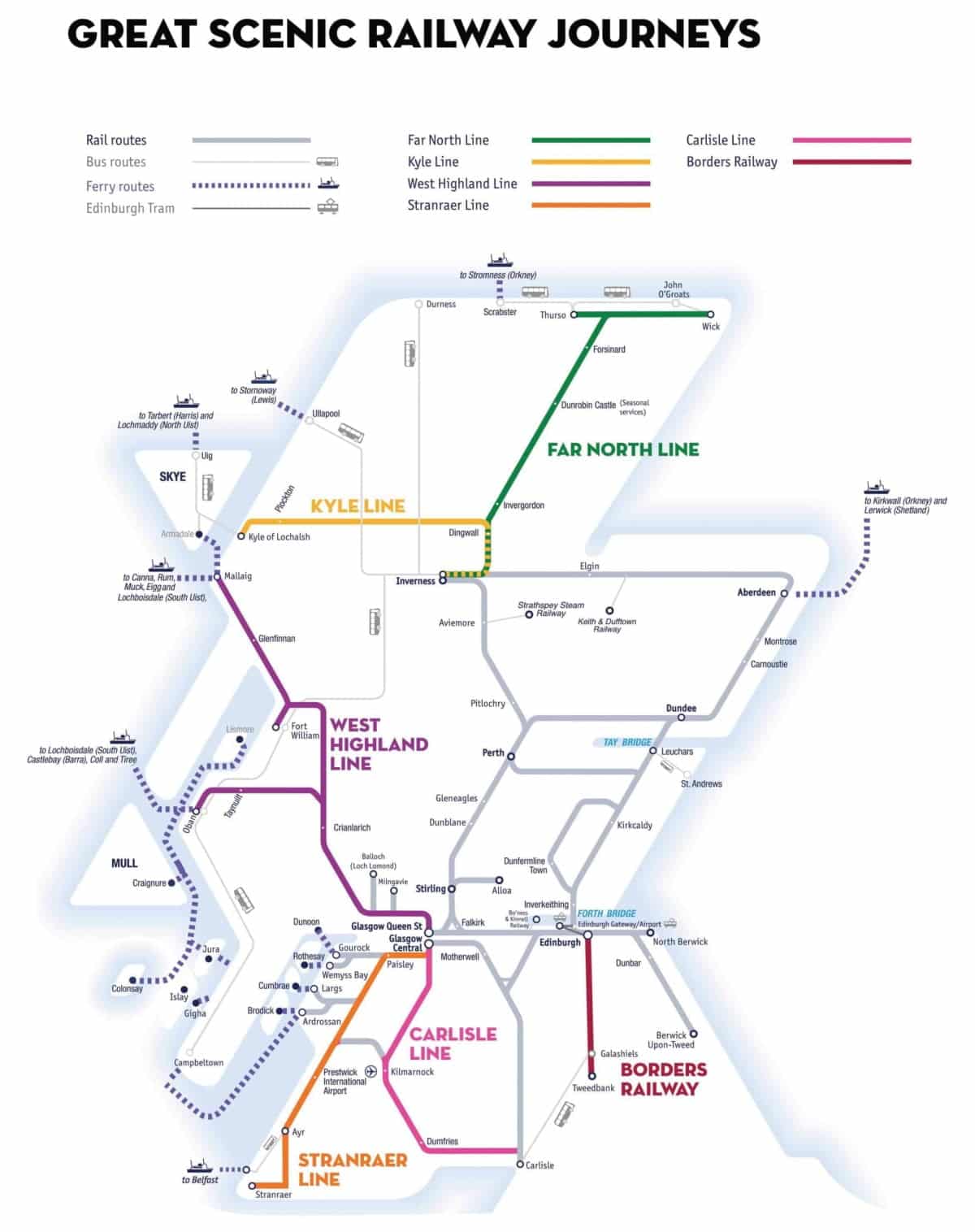
If pushed, I’d say the West Highland Line is the nicest of the bunch as it cuts through some very scenic countryside between Glasgow and Fort William before continuing to its final destination at Mallaig. Also, you can swap trains at Fort William to the wonderful ‘Harry Potter’ Jacobite steam train which is famous for its scenes in the movies where it puffs its way across the Glenfinnan viaduct.
Train prices are considerably more expensive than other transport options but you can save money by booking single tickets in advance through The Trainline website or getting a Scotrail Spirit of Scotland pass which gives you unlimited travel for four or eight days.
Since you must take a ferry that is subject to the whims of the Inner Hebridean Seas and the Atlantic Ocean, getting to the west coast islands is a little more challenging. However, islands nearby provide some protection for certain waterways, like the Sound of Mull. The only exception is the Isle of Skye, which has a road bridge that joins the southeast corner of the island to Kyle of Lochalsh, meaning you don’t need to take a ferry at all.
While you could sail from Mallaig on the mainland to Armadale on Skye, I recommend crossing the bridge as a road trip in that region of Scotland is a fantastic experience, especially if you stop at attractions like Eilean Donan Castle which is located 9 miles from the bridge on the A87.
The main ferry operator in Scotland is Caledonian MacBrayne and their main transport hub is in Oban (known as ‘the gateway to the isles’).
Winter Driving in Scotland
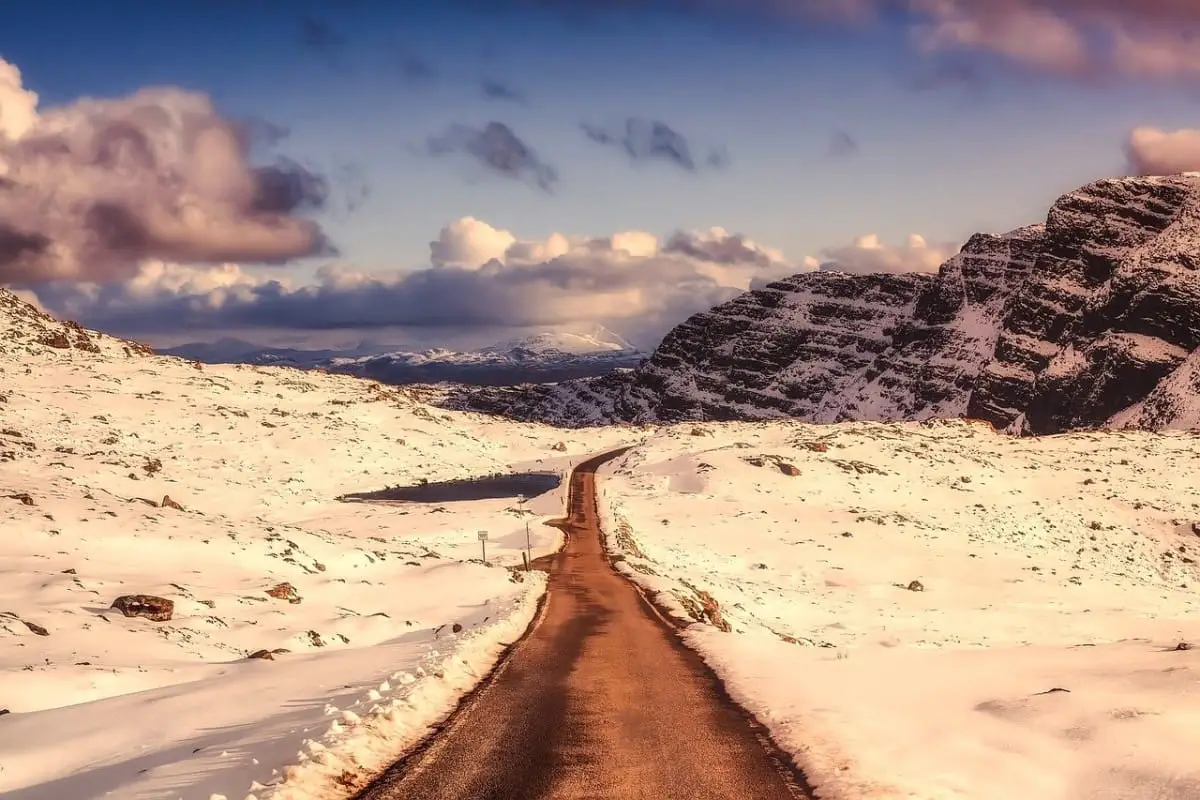
If you’re driving a hire car in winter you can pretty much just set off as long as you’ve booked through a reputable company, but if you’re driving your own car and you’re not familiar with Scotland’s roads there are a few essential pieces of advice that you must take notice of before setting out on your journey.
I’m making this point from first-hand experience, as the first time I visited Scotland, I was living in sunny Cornwall and decided on an impromptu mega road trip, only to find my car sideways in a ditch shortly after entering the Cairngorms. That error was completely my fault, as I’d set off without preparing my car, so if you’d like to avoid the same mistake, please take note of the following list of tips for driving in Scotland in the winter.
Preparing Your Car for Winter Driving
1: Plan your route by checking a road map and then checking the weather forecast in the area you’re driving to. If you live in Cornwall, for example, and you’re not used to driving through a foot of snow, you don’t want to end up waiting hours in the middle of the Scottish Highlands for the AA to rescue you (ahem). The Traffic Scotland website is a great resource for the latest winter driving conditions.
2: In the UK, it is not illegal to drive with snow on the roof of your car, but if enough falls off while driving to cause injury to anyone, you could be liable for driving without due consideration. Even more importantly, it is illegal to drive with a windscreen that is obscured by mist or ice, and you could land yourself a £60 fine and three points on your licence as a minimum.
3: Following on from the above, it is UK law that all lights are visible, and the same goes for the front and rear number plate lights.
4: If you’re planning on a road trip through Scotland’s remote areas make sure your fuel tank is topped up so you can leave the engine running if you break down, and pack a bag with food and water as a precaution. Remember each person, on average, drinks 3 litres of water per day.
- 【100% Safe & Odorless Material】 Made of Eastman Tritan copolyester, all our water bottles are totally BPA-free and non-toxic, quenching your thirst with odorless water as well as a glass one can provide. Tritan also gives the extra durability withstanding accidental shocks and temperatures vary from -10℃ to 96℃.
- 【360° Leakproof Design】 This water bottle employs a 3-stage leakproof design: a silicone sealing ring prevents leakage in the screw area; two silicone dot pads seal the nozzle and air vent when the lid is closed; a safety lock prevents accident opening the lid. Comes with sponge brush for your convenience.
- 【Humanization in Every Detail】 By just one press, the lid opens immediately and its anti-rebound design ensures your using safety. Built-in with a removable filter, you can always enjoy drinking and avoid chock by ice cubes, fruits, or tea leaves. The air vent balances the barometric pressure, making water flow into your mouth fluently.
- 【Portable for Multiple Activities】 The 1L capacity achieves a perfect balance between utility and portability. With a carry loop, you can go for both indoor and outdoor exercises with it, including cycling, running, camping, hiking, yoga, treadmill, etc. Its compact size also fits your backpack and bike bottle holder perfectly.
- 【Ideal Gift for Families & Friends】 As hydration helps boost our metabolism, this water bottle becomes an ideal gift option for families and friends. And if you have any questions, please do not hesitate to contact us and we’ll reply within 24 hours to provide you with satisfying service.
5: A breakdownA car cover is an essential purchase for anyone visiting Scotland with a car. The RAC and AA have roadside assistance plans starting at less than a tenner a month, which will be money well spent if you need recovery. Private services, e.g., a local garage, will charge upwards of £200 for a single call-out.
6: Before setting off, check that a few basic,but necessary,parts are working: wipers, fan heater, screenwash, lights (including indicators and fog lights), and make sure you haven’t got any warning lights on the dashboard.
7: Pack an emergency kit for every eventuality, which includes a mobile phone and a USB battery pack (Amazon) because phone batteries die quickly when they’re cold, a hi-vis vest, de-icer, a warning triangle, jump leads, and a spade. You can get most of that in a single emergency kit from Amazon.
Also, pack a thermal blanket (Amazon) and keep it near the centre console so it can be easily retrieved if the car overturns and any occupants are trapped.
8: If the road conditions are really bad, you should consider investing in snow tyres or snow chains. Snow tyres have studs embedded in them that provide extra grip, and snow chains wrap around normal tyres to achieve the same effect.
Neither are suitable for driving on clear roads where there is no snow, and snow chains can actually damage both your car and the road if you don’t take them off when you get back on the tarmac.
How to Drive in Snow
Driving in snow is very tricky if you’re not used to it, especially if you find yourself in a skid. The advice of most driving experts from the AA and RAC is to not get yourself in that position in the first place and the following tips will help you drive safely in winter.
Please note that driving in snow and ice is your responsibility alone so if you don’t feel comfortable, do not attempt the journey.
- To avoid wheel slip when setting off, start in second gear and move away slowly. This isn’t so important if you have a 4×4 or your car has a winter mode as the vehicle will do most of the work for you.
- Once on the move, try to accelerate gently and get to as high a gear as possible as quickly as possible.
- Leave a much bigger gap between you and the car in front than you would if the road surface was clear. The RAC recommends leaving a gap ten times bigger than normal.
- If you find yourself on a steep hill keep your momentum going without changing gear. The appropriate speed will depend on the gradient of the hill.
- When heading back downhill use a low gear and avoid braking quickly.
- If you find yourself in a skid, steer gently into it but do not panic and slam the brakes on. Instead, take your foot off the accelerator and keep both hands on the steering wheel.
- If you end up driving in heavy snow you can experience a white-out where your headlights are reflected back at you. Make sure you use dipped headlights and if the visibility drops below 100 metres put your fog lights on.
- Be aware that some sections of road that are shaded from the sun (tight corners and humpback bridges for example) will be the first to freeze and the last to thaw. If the rest of the road looks fairly clear but you’re near one of these hazard areas, slow down.
- In the Highlands, there are snow markers on either side of the road that indicate how deep the snow is and the direction of the road. Keep an eye on them, as they’re invaluable for spotting hidden dips.
Scotland Winter Walking Advice
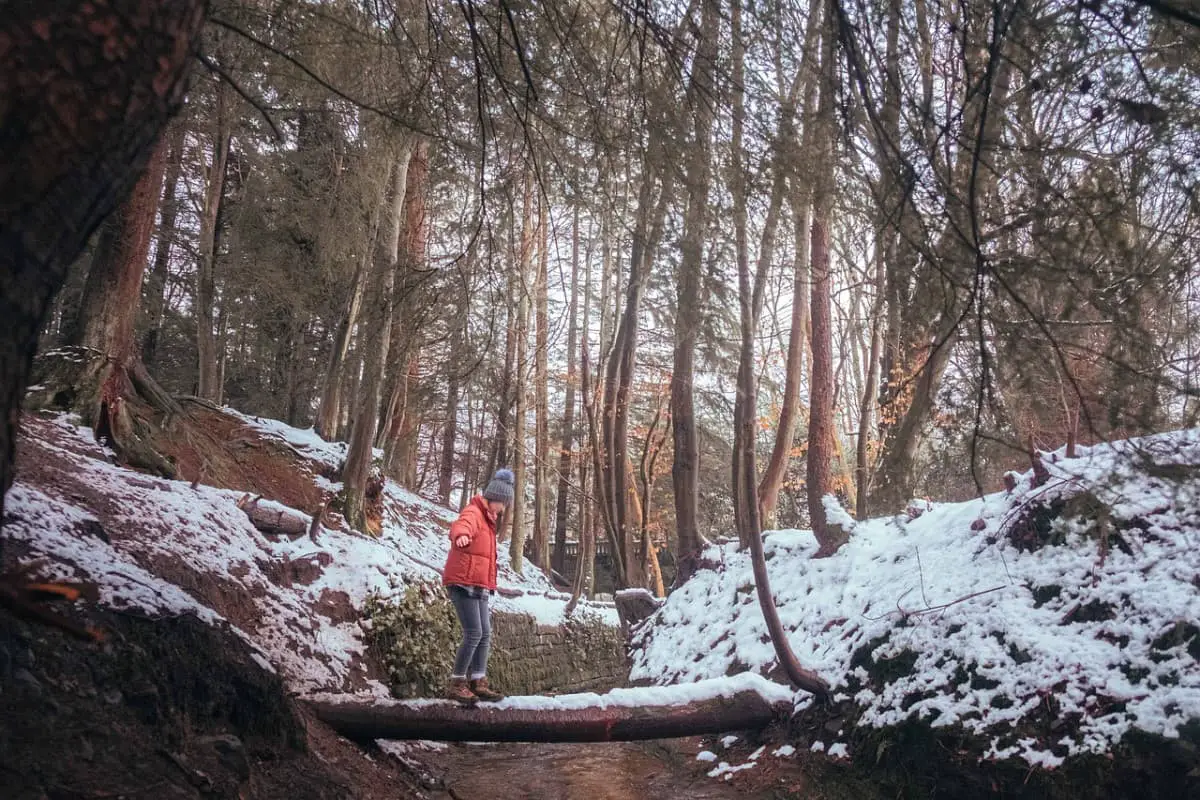
The months of January and February are two of my favourite times to go walking in Scotland, as that’s the time of year when almost all mountains and hills have a fresh white layer of snow on top of them. I wouldn’t recommend heading to the summits in winter unless you’re a seasoned climber, but wandering through secluded glens and forests on a crisp winter day is a sublime experience.
If you do decide to head out into the wilds, you need to be aware that while Scotland’s landscapes are beautiful, they can also be deadly if you don’t take the right precautions, so take note of the following list of things you need to know before you head out.
Note that the Amazon affiliate links below are for items I recommend.
1: Wrap up warm with several layers of clothing and wear a sweat-absorbing base layer along with a rain and windproof jacket. You’ll lose a lot of heat from your head, so always make sure you wear a woolly hat, and wear gloves and thick socks to keep your extremities toasty.
2: I can’t overstate how important good quality boots are in Scotland. Get a pair that has good grips (‘Vibram’ branded are best) and is waterproof, and make sure they have supportive ankle protection. I swear by Berghaus boots, as although they’re a wee bit more expensive, they last much longer than cheaper brands, plus they’re supremely comfy. See my guide to the best waterproof hiking boots to wear in Scotland for more information.
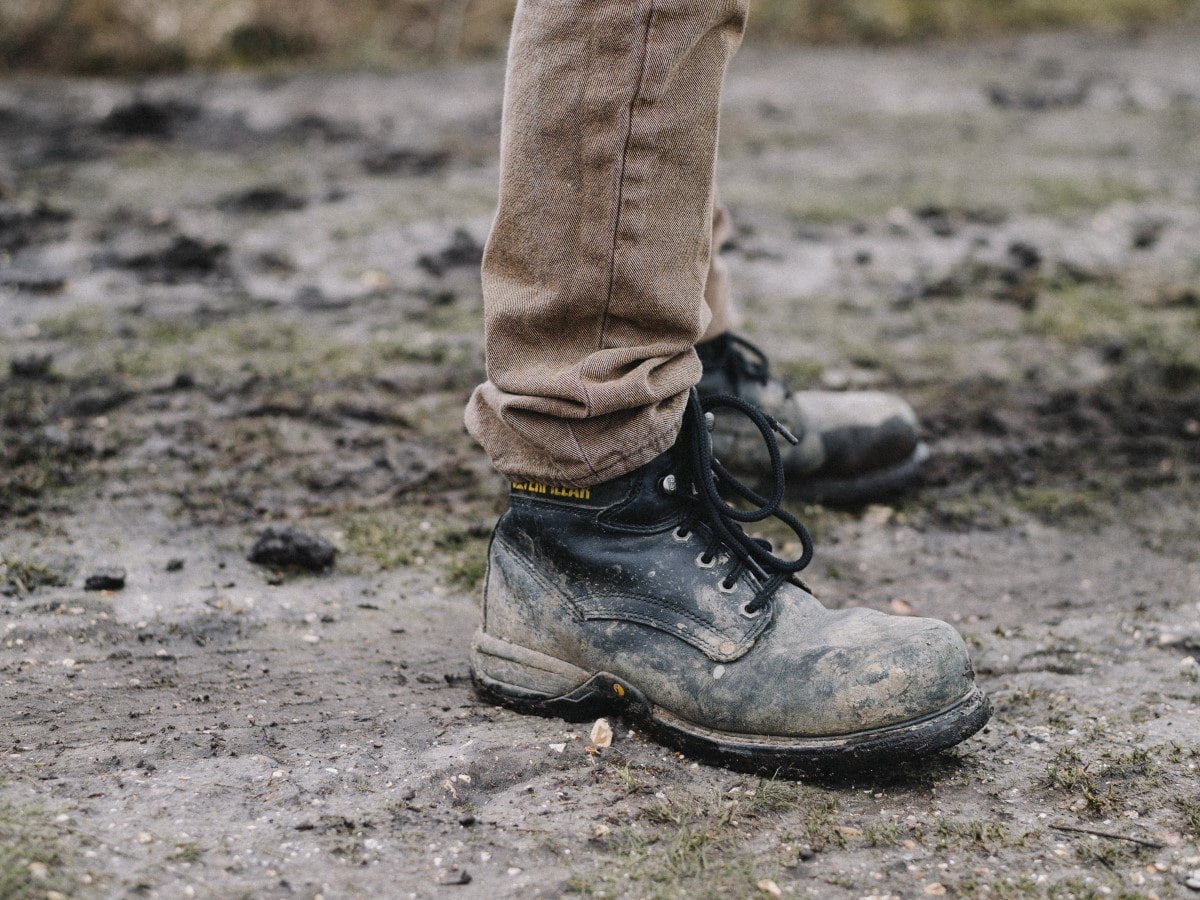
3: Pack high-energy food and drink to replenish the energy you’ll be burning in the cold. With regard to water, bear in mind that you should take 2 litres per person per day, and each litre weighs 1 kg. I take two bottles on my winter walks: one insulated Thermos for a cup of hot tea down the road, and a tough metal water bottle to stay hydrated.
4: Take walking poles. Not only will they help you balance on slippery surfaces, but they’ll also allow you to poke the ground in front of you so you don’t end up falling into a snow-covered hole.
5: Take a map and compass and learn how to use them. After a snowfall, the landscape can change dramatically, and it’s easy to lose your bearings. Ordnance Survey produces the best maps by a wide margin and offers a variety of waterproof, ultra-durable maps. I guarantee you’ll get lost just as it starts raining. Always happens to me.
Buy OS Landranger maps direct from Ordnance Survey.
6: Become familiar with your route before you leave and stick to it. One of the main reasons why winter hikers get lost is because they suddenly decide to take a different path and then find themselves unable to get back onto their pre-planned route.
The Walk Highlands website is a fantastic resource for walking trails in Scotland, and Google Maps is very handy as a free GPS, but make sure you’ve got a spare battery or a power pack in your bag.
7: If you happen to find yourself lost in the middle of nowhere in winter there’s something that could mean the difference between life and death. That something is Scotland’s network of ‘bothies’, which are weatherproofed huts located in the remotest regions of the country.
They are always unlocked and they are free to use with the only requirement that you leave them clean and tidy afterwards. You’ll find a complete guide to them in The Scottish Bothy Bible.
Resources
- Walk Highlands: Detailed hiking maps and route information with photos to help you get your bearings.
- Traffic Scotland: Provides updated road and rail information that includes disruptions to services due to bad weather.
- Google Maps. Where would we be without Google Maps? The world’s biggest mapping provider and one of the best. Google Maps includes directions for travellers on foot, using a car, and using public transport.
- Scotrail is the official website of Scotland’s railways. You’ll need to visit this site to buy tourist rail passes like the Spirit of Scotland pass, but if you’re buying standard tickets you’ll often get them cheaper from The Trainline.
- The Met Office is the official body of UK meteorology and in my experience, their forecasts are the most accurate. A great alternative is Open Weather which has an easy-to-read layout on their website.
- Ordnance Survey has a great service where, for around £25 a year, you can download an unlimited number of OS maps to your mobile device. I use the app myself, and I’ve lost count of the number of times it has saved me when I’ve been out walking but forgot to pack a paper map.
You Might Also Like:
- The Best Outdoor Winter Activities in Scotland
- Things to do in Scotland in Winter: The Ultimate Guide
- Scotland in January: The 10 Best Places to Visit
Frequently Asked Questions
Is Scotland worth visiting in winter?
Winter is a great time to visit Scotland for anyone who loves wintry landscapes and fresh snow-capped mountain peaks. Popular snow sports locations are the Cairngorm, Nevis, and Glencoe mountain ranges which offer ski slopes of various grades.
Scotland’s cities have lots of festivals in winter with highlights including Edinburgh’s Christmas and Hogmanay festivals, and Glasgow’s festive lights display.
What is Scotland’s weather like in winter?
It is impossible to predict in advance what Scotland’s weather will do in winter, but generally, you can expect 0 to 5 °C from November to March and 7-9 hours of daylight (less the further north you go).
Around half the days each month will be overcast and rainy, and between November and March, you can expect 2-3 weeks of snowfall in the Lowlands and 100 days of snow in the Highlands.
What is the rainiest month in Scotland?
Scotland receives the highest amount of rainfall in the United Kingdom, and statistically, the rainiest month is December with an average of 200 mm of rainwater.
This changes from north to south and east to west with the west coast traditionally being wetter than the east coast and the Highlands being wetter than the Lowlands.
Can you see the northern lights in Scotland in winter?
It is not usual to see the northern lights in Scotland in winter, although the months between September and March offer the best chance as the nights are much longer than the rest of the year.
Galloway Forest Dark Sky Park, which is little affected by light pollution, is one of the best places to see the northern lights. Note that northern lights can only be seen when there is strong solar activity.

